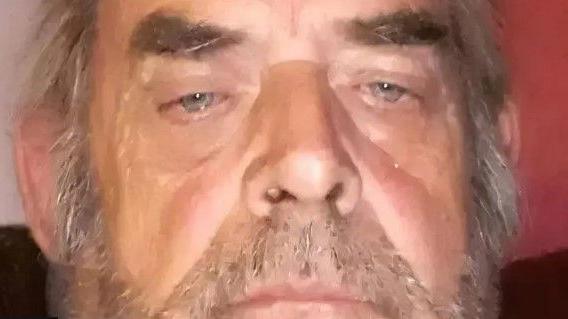Murder co-accused were 'in it together', court told

The body of Robert Wilkin was discovered on 3 July 2023 in the sea at the foot of the cliffs of Slieve League in the Republic Of Ireland
- Published
A man and a woman accused of the murder of Robert Wilkin in County Donegal were "in it together", a court has been told.
Nikita Burns, 22, of Carrick, County Donegal, and Alan Vial, 39, Drumanoo Head, Killybegs, County Donegal, are accused of murdering the 66-year-old, who was from County Tyrone, on 25 June 2023.
The body of Robert Wilkin, who was also known as Robin, was discovered in the sea at the foot of the cliffs of Slieve League.
Mr Vial has pleaded not guilty to the murder. Ms Burns has also pleaded not guilty to murder, but pleaded guilty to impeding the apprehension or prosecution of another person for an arrestable offence.
'Acted together as a joint enterprise'
Bernard Condon SC for the Director of Public Prosecutions (DPP) said that the pair were "in it together" as he opened the case in Dublin's Central Criminal Court on Friday.
"Because there are two people, essentially, they acted together as a joint enterprise," Mr Condon said.
"Where two or more people set out on a criminal enterprise, they're both responsible as each other."
Mr Condon told the jury that what the accused told gardaí (Irish police) about themselves is considered evidence, not what they say about each other.
"What they say about another person is not evidence," he said.
"You're going to hear each of them saying the other did it; that's fine, but that's not evidence - you'll hear all of that because it's a joint trial."
The prosecution alleges that Mr Wilkin died in circumstances where he was violently assaulted between Killybegs and Slieve League, and his body was disposed of over the cliffs.
"Whether he was dead or not when he went over is undetermined, but you can be fairly sure he didn't go over on his own," Mr Condon said.
The prosecution's case relies heavily on CCTV and DNA evidence, the court heard.
The court heard Mr Vial and Mr Wilkin were living together at the time, while Nikita Burns, who had no fixed abode at the time, had spent time in both men's company in the run-up to the alleged murder.
It is the prosecution's case that on the night of 24 June 2024, the three people were drinking together.
When they left a pub together in a car, they travelled west towards the village of Carrick and this is where the prosecution alleges the assault took place.
The court heard the car was then driven up to Slieve League and remained there for about 28 minutes, and later returned just before 03:00 local time.
On Sunday afternoon, the court heard Ms Burns and Mr Vial travelled to the town of Ardara, County Donegal, to the home of Alan Vial's brother, Bruce Vial, looking for multi-purpose cleaner to clean the car.
After they left Ardara, the court heard that the car they were travelling in crashed, and Mr Vial was arrested for drink driving.
The court heard that Ms Burns was later arrested, and when interviewed, she initially denied all knowledge of what happened before admitting she helped clean the car, but denied the assault.
Mr Vial initially made an admission of assault but denied murder. The court heard he had visible injuries and said it was from a struggle.
The court heard that Mr Wilkin's blood DNA was found in the car, while a pair of leggings found in a search turned up blood splatter that also was a match for Mr Wilkins.
Wet clothing and a pair of boots were also found; inside the boots was a phone belonging to him.
Also found at the scene on the cliffs was a bloody rock at the top of Slieve League and staining on it matches blood of the deceased.
Likewise, a white bloody blanket, a man's watch, and a grey jumper with blood on it, found in the same search, matched his DNA.
The court heard that police also found a vacuum cleaner with blood on it at the home of Mr Vial's brother.
The search operation
The court heard that the search operation around the cliffs and water of Slieve League comprised of helicopters, boats, drones, teams from the defence forces, and a large number of other people.
It was a week before Mr Wilkin's body was recovered.
A post mortem took place, but the court heard that because of the delay in its discovery, and the body being submerged in the water for such a time, this resulted in an undetermined cause of death.
However, two injuries which were depressed fractures on the skull, are in keeping with blunt force trauma in life, according to Mr Condon.
This, he said, was likely caused with a blunt weapon with an edge, administered while he was still alive.
The rock found was consistent with causing these fractures; however, ultimate determination of the cause of death is not possible.
The case is expected to last three weeks and is set to continue next week.